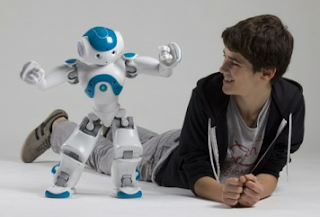Technology Brief By Future TimeLine
14 nanometre chips enter mass production
The next generation of microprocessor technology is released by Intel, with transistors now based on a 14nm manufacturing process.* For comparison, a carbon atom is 0.34nm wide.* The 4GHz barrier in stock CPU is finally being passed, thanks to the performance and energy efficiency of these new chips.
Highly flexible touch sensors are appearing in a range of gadgets
Highly flexible, film-based touch sensors are entering the smartphone and tablet markets.* They are also extending touch capabilities into a range of new consumer and industrial products. Using roll-to-roll metal mesh technology, they provide a high-performance alternative to existing touch sensors. Larger, lighter, sleeker, curved and edgeless designs can now be developed for handheld devices. Thinner sensor stacks with flawless touch performance, excellent optical clarity, low sheet resistance and low power consumption are enabling designers to turn unique, futuristic concepts into functional designs at lower total system costs compared to previous market alternatives.
OLED displays are in widespread use
Having fallen considerably in cost, organic light-emitting diodes (OLED) are appearing in a wide variety of devices. These use considerably less power than traditional LEDs and LCDs whilst allowing sharper, thinner, brighter displays. They also eliminate the need for back lights. Sunlight that would normally "wash out" a display has no effect - screens appear the same even in broad daylight, or when tilted at an angle.*
LED lamps dominate the commercial and domestic lighting markets
For many years, light-emitting diodes (LEDs) were used as indicators such as red standby dots on TVs. At first, they were available only as a red light source, and their output was too low for general illumination. As the technology developed, other colours became available and the lamps became brighter, so LEDs found other roles in a wide range of appliances and equipment.
In the early 2010s, it was found that LED technology could vastly improve the brightness, colour and distribution of lighting in social housing communal areas. Not only that, but it could deliver huge energy savings (up to 90%), and reduce long-term costs and maintenance, while making residents feel safer.
Web 4.0 is transforming the Internet landscape
Further convergence of the online and physical world has led to the emergence of "Web 4.0" - the next generation of internet. Semantic analyzing programs, having evolved into forms of AI, now perform a huge range of automated tasks for business, government and consumers. Running on massively parallel networks, these applications hunt for textual and visual data - combining the most subtle capabilities of humans (such as pattern recognition) with ways in which machines are already vastly superior (such as speed and memory).*
In addition to serving as highly advanced search engines, they are playing a major function in the real world - gathering information from the array of sensors, cameras and other tracking devices now present in the environment, on vehicles, and even on people themselves.
Although privacy and civil liberties issues are being raised, this new generation of IT promises to bring enormous benefits to society. Crimes are faster and easier to solve thanks to these intelligent virtual agents; transport and logistics are smoother and more efficient; resources can be managed and distributed more accurately.
In addition, practically every physical document in existence has now been digitally encoded, backed up and archived online. This includes full copies of all books, journals, manuscripts and other literature ever published – forming a complete repository of human knowledge going back thousands of years. These documents can be retrieved and analysed using real-time speech commands, translated from any of the world's 6,000 languages and accessed via 3D holographic imaging.
Web 4.0 is also democratising the Internet more than ever before. News agencies are finding themselves increasingly outmoded by bloggers and other social media when it comes to speed and accuracy of information.
AI is widespread
Despite the recent economic disruption, technology is continuing to accelerate exponentially. By 2030, the pace of change is so great that it seems as if an entire century of progress has already occurred in the first three decades of the 21st century.* Scientific breakthroughs appear to be happening with startling frequency now - especially in the fields of computing, nanotechnology, medicine and neuroscience.*
Workplaces are becoming highly automated, with tremendous improvements in speed, productivity and efficiency. Ever-increasing use of portable, wireless devices has led to the evolution of near-paperless offices. Meanwhile, the need for hyperfast exchange of information has created enormous demand for video conferencing. This trend is reinforced by significant reductions in air travel, due to both spiralling fuel costs and environmental concerns.
Many companies are downsizing their administrative departments and replacing them with AI. This is particularly true of call centres and other service-based roles, where customers often deal face-to-face with "virtual employees" based on automated software. Crude versions of these had been utilised as far back as the 1990s - activated by simple voice commands - but many are now being presented onscreen as fully conversant entities.
Langganan:
Posting Komentar (Atom)



Tidak ada komentar:
Posting Komentar
Umpan balik diperlukan untuk kelangsungan blog ini